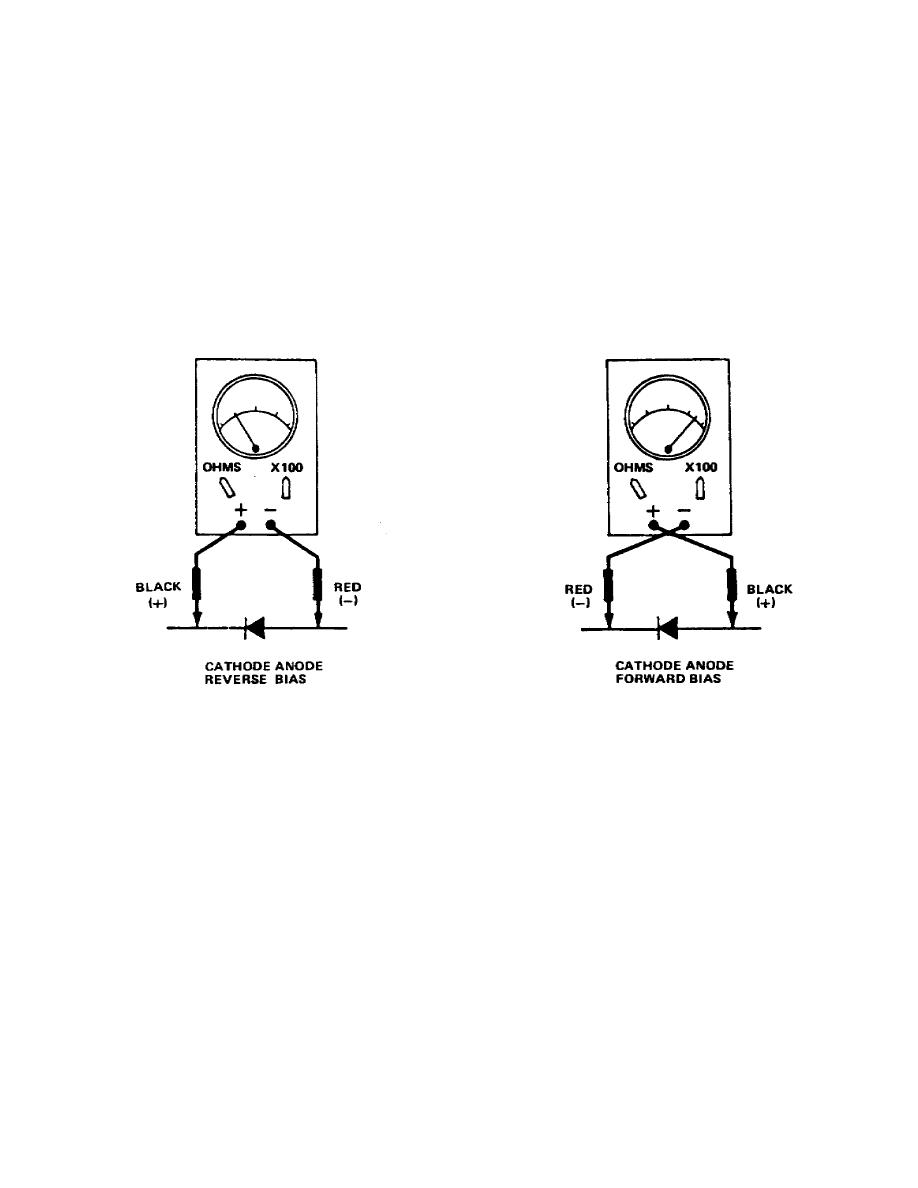
Learning Event 10:
IDENTIFY DIODES, CATHODES, AND ANODES, TO DETERMINE SERVICEABILITY
1.
The solid-state diode may be thought of as a resistor that has a high
resistance in one direction and a very low resistance in the other direction. As
you remember, the end of a diode which current can easily enter is the cathode,
while the end through which current leaves is the anode. A diode may become open
or shorted.
In either case, the diode is useless.
We will discuss some of the
common procedures for checking a diode.
2.
There are several physical differences in diodes, but even if we know these
differences, we may still be unable to discern between a diode and a resistor. One
sure way to tell the difference is to check with an ohmmeter. A resistor has the
same resistance to current in both directions.
As shown in Figure 1-26, a diode
exhibits a different resistance when reversing lead positions.
Figure 1-26.
Forward-bias and reverse-bias diode
a. When the ohmmeter function on the PSM-6 is selected, the polarity of its
leads reverses. The black lead becomes positive and the red lead becomes negative.
In order to make the meter deflect in the proper direction, current must enter the
meter through the black lead.
To accomplish this on the ohms function, the
internal battery is connected with its negative terminal to the red lead, and its
positive terminal to the black lead.
31



 Previous Page
Previous Page
